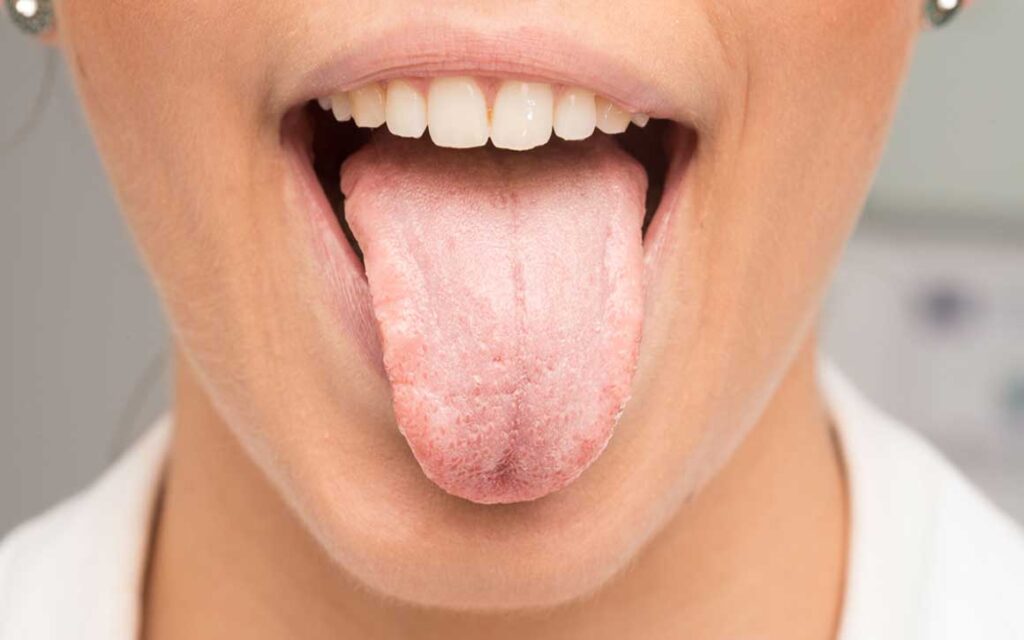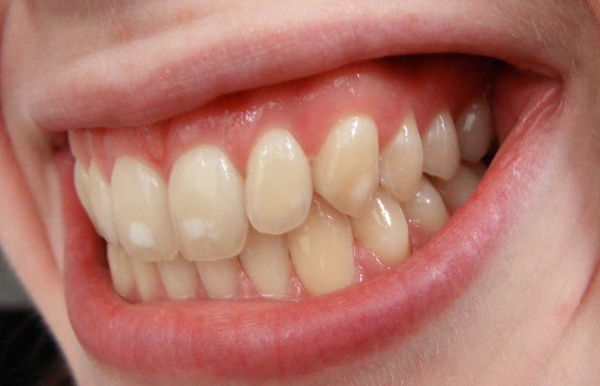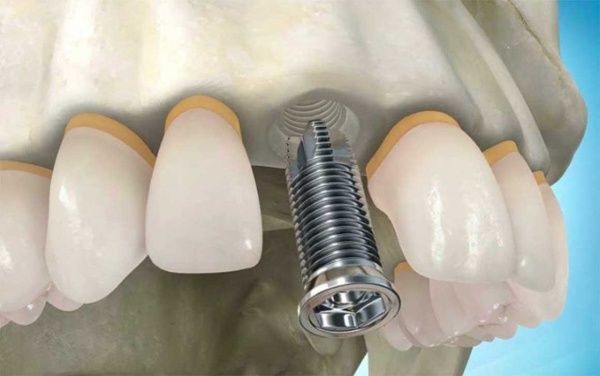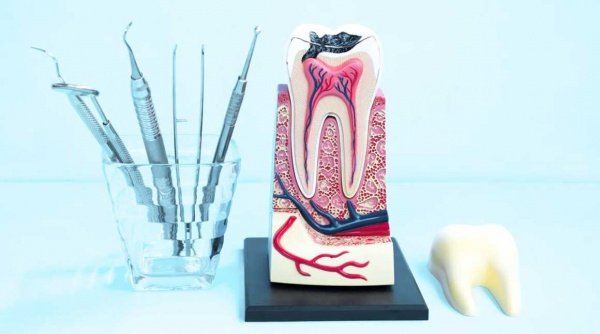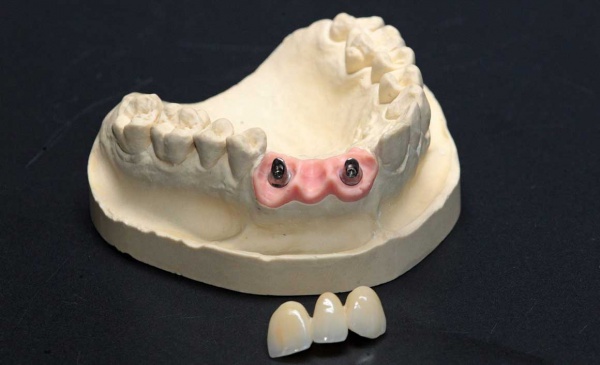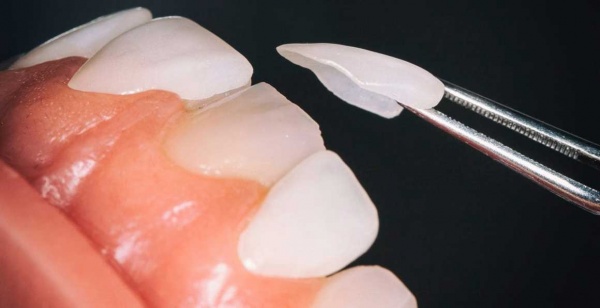A change in the structure of the tongue and the appearance of discomfort is a reason for an immediate visit to the dentist. Timely treatment will avoid a number of problems that an infection can lead to.
Symptoms of glossitis
The disease is determined visually. Changing the color, structure of the tongue, the appearance of swelling, burning and increased salivation are the primary signs of the disease. As soon as such a call is received, you should immediately contact a specialist. Only a competent doctor can fully identify the cause and prescribe the correct treatment, since the insidiousness of glossitis lies not only in the external manifestation and localization of symptoms in the oral cavity. Often, diseases of internal organs, such as the gastrointestinal tract or liver, give complications precisely in the form of this disease, which is easy to recognize visually.
Impact on taste buds inevitably entails a change in those same taste sensations. They change, become dull, or are completely absent. In addition, due to the inflammatory process, eating is hampered by pain. Puffiness leads to a change in speech, since pain and a change in the size of the tongue interfere with the usual work of the speech apparatus.
Symptoms often depend on the type of disease and its cause. Thus, structural changes in the surface and color for a specialist indicate the presence of a problem in one or another system of the body.
The neglect of the disease leads to even more pronounced consequences. This is the appearance of erosive foci, accompanied by more severe pain, an abscess or phlegmon. In each case, we are talking about a rapidly developing form that can affect not only the oral cavity, but also related tissues and systems.
Diagnosis of glossitis
The first bells are easy to identify visually. If the tongue has changed color and structure, causeless spots, lines and furrows have appeared on it - this is a reason to immediately contact a dentist.
During the examination, the specialist will determine the problem and prescribe a set of diagnostic measures. It could be:
- Blood chemistry,
- Cytological examination,
- Bacteriological analysis,
- Histology,
- Serological diagnosis.
Only an integrated approach will systematically identify the focus of inflammation and determine its nature. And this will become a factor in proper treatment.
Varieties of glossitis
Before starting treatment, it is necessary to recognize the type of disease. The disease is insidious in its ambiguity and versatility. There are several types of glossitis. This is:
- Desquamative. It is often caused by failures in the work of internal organs. The tongue in this case is covered with reddish spots, framed by a white coating. They do not have a clearly defined shape and are randomly located on the surface.
- Folded glossitis is characterized by the appearance of uneven lines and furrows on the surface of the tongue. It can be caused by a long-term injury or an infection.
- Catarrhal glossitis leads to the appearance of a white coating and reddening of the entire surface. Pain intensifies, the area of the lesion increases. The reason is mechanical, thermal or chemical damage.
- Candidiasis glossitis is characterized by a strong coating and the appearance of an unpleasant odor. Its nature lies in the violation of the microflora caused by concomitant diseases or improper hygiene.
- The rhomboid shape is the cause of gastrointestinal diseases and manifests itself in the form of changes in the structure in the form of a rhombus or rectangle.
- Ulcerative. Accompanied by the appearance of erosive areas and pronounced pain.
- The purulent-phlegmous form leads to disruption of the whole organism due to damage to the deep tissues of the tongue, followed by intoxication.
- Villous glossitis leads to keratinization and thickening of the papillae with a change in their color. The cause of this form can be a genetic predisposition, bad habits and a deep infection.
- Gunterovsky. Symptoms are manifested in an unhealthy bright color of the tongue. The reason is diseases of the circulatory system.
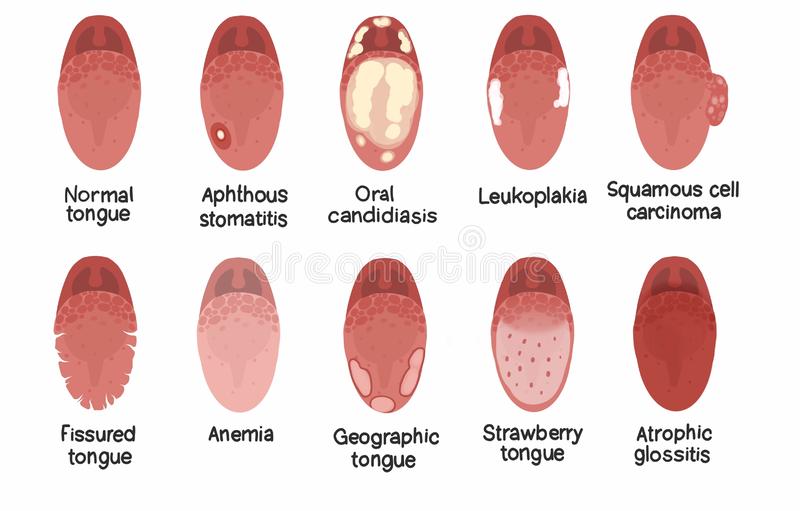
Glossitis treatment
The course of treatment is determined by a specialist based on the results of the studies. The type of disease, its neglect and symptoms affect the chosen regulation, which is determined by the doctor.
The use of antiseptic solutions, antibiotics and a vitamin complex is not the whole list of possible manipulations. Often, treatment should begin with the elimination of the cause and the eradication of the disease that led to the disease of the oral cavity.
Only a competent dentist and a reliable clinic guarantee the correct diagnosis and an effective approach to fixing the problem.

